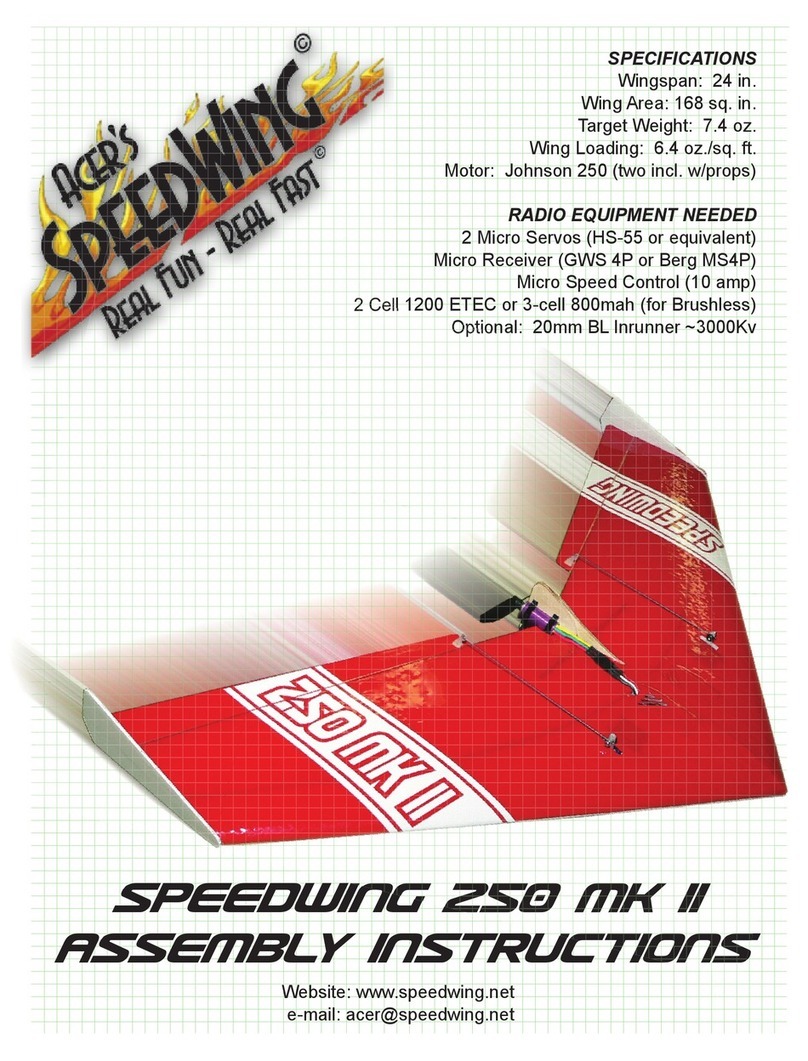
7. Insert the motor into the motor mount. You will
need to mark where the motor ts into the mount and
cut a small amount of foam out of the wing so that the
motor can slide all the way forward.
Installing the Carbon Fiber Flats
IMPORTANT: Be very careful during the next few
steps when handling the Carbon Fiber Flats. DO NOT
run your ngers or hand along the CF Flats as you will
get carbon splinters. When cutting or sanding any
Carbon Fiber be sure to wear a dust mask or respirator.
BE CAREFUL.
1. Place the wing in the bottom wing beds and place
on a at surface. (Note: you will have to place the
wing beds on top of something (like a couple of short
2x4’s) so that it can sit level on the table).
2. Tape two CF ats to the top of the wing. There is a
slit in the front of the mount and one in the back of the
mount that the CF Flats go through.
3. Use a pen to mark where you will be burying the
CF Flats. Remove the CF Flats.
4. Using a sharp X-acto knife or single edge blade,
make a single cut along the lines that you have
marked. Only cut as deep as the CF Flat is wide. I
nd it helpful to use a little bit of masking tape on the
blade so that I don’t cut too deep.
5. Now place weights on the wing so that the wing
remains at for the next steps.
6. Press the CF Flats into the wing until the CF Flat
is ush with the top surface of the wing. Now, use
Thin CA (superglue) to glue the CF to the foam. You
only need to run the Thin CA directly on top of the CF
Flat as the glue will absorb into the CF Flat and foam.
Leave the wing weighted down in the beds until the
glue dries (you can use a small amount of CA Kicker
to make the glue dry quicker).




























